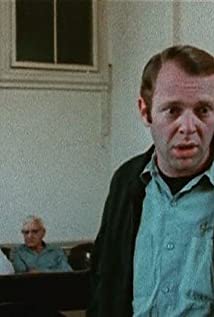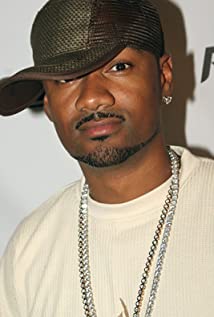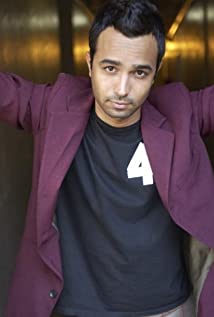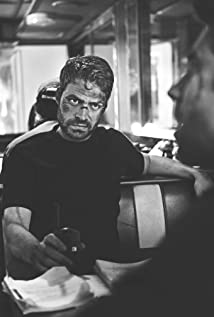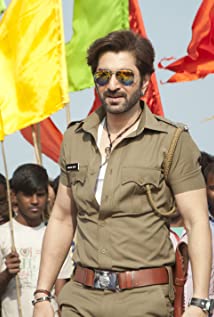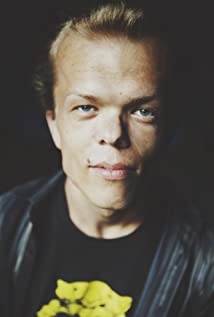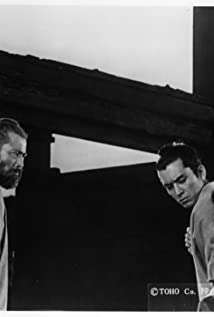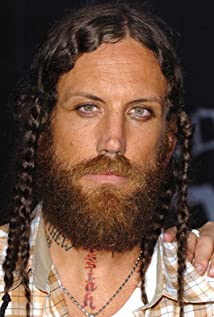
As per our current Database, Lon Chaney has been died on August 26, 1930(1930-08-26) (aged 47)\nLos Angeles, California, U.S..
When Lon Chaney die, Lon Chaney was 47 years old.
| Popular As | Lon Chaney |
| Occupation | Actor |
| Age | 47 years old |
| Zodiac Sign | Taurus |
| Born | April 01, 1883 ( Colorado Springs, Colorado, United States) |
| Birthday | April 01 |
| Town/City | Colorado Springs, Colorado, United States |
| Nationality | United States |
Lon Chaney’s zodiac sign is Taurus. According to astrologers, Taurus is practical and well-grounded, the sign harvests the fruits of labor. They feel the need to always be surrounded by love and beauty, turned to the material world, hedonism, and physical pleasures. People born with their Sun in Taurus are sensual and tactile, considering touch and taste the most important of all senses. Stable and conservative, this is one of the most reliable signs of the zodiac, ready to endure and stick to their choices until they reach the point of personal satisfaction.
Lon Chaney was born in the Year of the Goat. Those born under the Chinese Zodiac sign of the Goat enjoy being alone in their thoughts. They’re creative, thinkers, wanderers, unorganized, high-strung and insecure, and can be anxiety-ridden. They need lots of love, support and reassurance. Appearance is important too. Compatible with Pig or Rabbit.










Leonidas Frank Chaney was born in Colorado Springs, Colorado, to Frank H. Chaney and Emma Alice Kennedy. His father was of English and French ancestry, and his mother was of Scottish, English, and Irish descent. Chaney's maternal grandfather, Jonathan Ralston Kennedy, founded the "Colorado School for the Education of Mutes" (now, Colorado School for the Deaf and Blind) in 1874, and Chaney's parents met there. His great-grandfather was congressman John Chaney. Both of Chaney's parents were deaf, and as a child of deaf adults Chaney became skilled in pantomime. He entered a stage career in 1902, and began traveling with popular Vaudeville and theater acts. In 1905, Chaney, then 22, met and married 16-year-old singer Cleva Creighton (Frances Cleveland Creighton) and in 1906, their only child, a son, Creighton Tull Chaney (later known as Lon Chaney Jr.) was born. The Chaneys continued touring, settling in California in 1910.
The time spent there is not clearly known, but between the years 1912 and 1917, Chaney worked under contract for Universal Studios doing bit or character parts. His skill with makeup gained him many parts in the highly competitive casting atmosphere. During this time, Chaney befriended the husband-wife Director team of Joe De Grasse and Ida May Park, who gave him substantial roles in their pictures, and further encouraged him to play macabre characters.
Chaney married one of his former colleagues in the Kolb and Dill company tour, a chorus girl named Hazel Hastings. Little is known of Hazel, except that her marriage to Chaney was solid. Upon marrying, the new couple gained custody of Chaney's 10-year-old son Creighton, who had resided in various homes and boarding schools since Chaney's divorce from Cleva in 1913.
In 1917 Universal presented Chaney, Dorothy Phillips, and william Stowell as a team in The Piper's Price. In succeeding films, the men alternated playing lover, villain, or other man to the beautiful Phillips. They would occasionally be joined by Claire DuBrey nearly making the trio a quartet of recurring actors from film to film. So successful were the films starring this group that Universal produced fourteen films from 1917 to 1919 with Chaney, Stowell, and Phillips. The films were usually directed by Joe De Grasse or his wife Ida May Park, both friends of Chaney's at Universal. When Chaney was away branching out on films such as Riddle Gawne and The Kaiser, Beast of Berlin, Stowell and Phillips would continue on as a duo until Chaney's return. Stowell and Phillips made The Heart of Humanity (1918), bringing in Erich von Stroheim for a part as the villain that could easily have been played by Chaney. Paid in Advance (1919) was the group's last film together, for the chiseled featured Stowell was sent to Africa by Universal to scout locations for a movie. En route from one city to another, Stowell was in the caboose when it was hit by the locomotive from another train; he was killed instantly. The majority of these films are lost but a few, including Triumph and Paid in Advance survive in private collections or unrestored in European or Russian archives.
In 1919, Chaney had a breakthrough performance as "The Frog" in George Loane Tucker's The Miracle Man. The film displayed not only Chaney's acting ability, but also his talent as a master of makeup. Critical praise and a gross of over $2 million put Chaney on the map as America's foremost character actor.
Makeup in the early days of cinema was almost non-existent with the exception of beards and moustaches to denote villains. Most of what the Hollywood studios knew about film stemmed from their experience with theater make-up, but this did not always transfer well to the big screen, especially as the film quality increased over time. It is also worth noting that make-up departments were not yet in place during Chaney's time. Prior to the mid-20s, actors were expected to do their own make-up. In absence of specialized make-up Artist professions, Chaney's make-up artistry skills gave him a competitive advantage over other actors. He was the complete package. Casting crews knew that they could place him in virtually any part and he would thrive. He was a man of many make-ups. In fact, in some films this allowed him to play dual roles. An extreme case of this was the film Outside the Law (1920), where he played a character that shot and killed another character, which he also was playing.
In the final five years of his film career (1925–1930), Chaney worked exclusively under contract to Metro-Goldwyn-Mayer, giving some of his most memorable performances. His portrayal of a tough-as-nails marine drill instructor in Tell It to the Marines (1926), one of his favorite films, earned him the affection of the Marine Corps, who made him their first honorary member from the motion picture industry. He also earned the respect and admiration of numerous aspiring actors, to whom he offered mentoring assistance, and between takes on film sets he was always willing to share his professional observations with the cast and crew. During the filming of The Unknown, Joan Crawford stated that she learned more about acting from watching Chaney work than from anyone else in her career. "It was then," she said, "I became aware for the first time of the difference between standing in front of a camera, and acting."
In 1929, Lon Chaney built a stone cabin in the remote wilderness of the eastern Sierra Nevada, near Big Pine, California, as a retreat. The cabin (designed by Architect Paul Williams) still stands, and is preserved by the Inyo National Forest Service. Following his death, Chaney's famous makeup case was donated to the Los Angeles County Museum by his widow, Hazel. The case is occasionally displayed for the public. The stage theater, at the Colorado Springs Civic Auditorium is also, named after the actor.
During the filming of Thunder in the winter of 1929, Chaney developed pneumonia. In late 1929 he was diagnosed with bronchial lung cancer. This was exacerbated when artificial snow, made out of cornflakes, lodged in his throat during filming and quickly created a serious infection. Despite aggressive treatment, his condition gradually worsened, and seven weeks after the release of the remake of The Unholy Three, he died of a throat hemorrhage on Tuesday, August 26, 1930, in Los Angeles, California. His funeral was held on August 28 in Glendale, California. Honorary pallbearers included Paul Bern, Hunt Stromberg, Irving Thalberg, Louis B. Mayer, Lionel Barrymore, Wallace Beery, Tod Browning, Lew Cody, and Ramon Novarro. The U.S. Marine Corps provided a chaplain and Honor Guard for his funeral. While his funeral was being conducted, all film studios and every office at MGM observed two minutes of silence in his honor.
Chaney was interred at Forest Lawn Memorial Park Cemetery in Glendale, next to the crypt of his father. His wife Hazel was interred there upon her death in 1933. For unknown reasons, Chaney's crypt has remained unmarked.
Chaney's son Creighton, who later changed his name to Lon Chaney Jr., became a film actor after his father's death. Chaney Jr. is best remembered for roles in horror films, most notably, as the title character in The Wolf Man (1941). In October 1997, both Chaneys appeared on commemorative US postage stamps as the Phantom of the Opera and the Wolf Man, with the set completed by Bela Lugosi as Dracula and Boris Karloff as Frankenstein's Monster and the Mummy. Chaney and his son are mentioned in the Warren Zevon song "Werewolves of London".
In 1957, Chaney was the subject of a biopic titled Man of a Thousand Faces, and was portrayed by James Cagney. The film is a largely fictionalized account, as Chaney was notoriously private and hated the Hollywood lifestyle. He never revealed personal details, about himself or his family, once stating "Between pictures, there is no Lon Chaney."
Lon Chaney has a star on the Hollywood Walk of Fame, located on Hollywood Boulevard. In 1994, Al Hirschfeld's caricature of Chaney was featured on a commemorative United States postage stamp.
Chaney is also the subject of the 2000 documentary feature, Lon Chaney: A Thousand Faces. The film was produced by silent film Historian Kevin Brownlow and narrated by Kenneth Branagh.

